It's clear that NFL teams are drafting smarter and smarter every year, so it's no easy chore to pick the best 2019 NFL draft pick for each franchise. So many teams did good work on Days 2 and 3 in securing contributors at value. I especially liked the way the Colts, Patriots, Broncos and Chiefs managed the draft. But I wanted to highlight one pick for all 32 teams that stood out.
Remember: "Best pick" does not necessarily mean "best player." Team needs, the value a player presented in comparison to my board, and any trades related to the pick all factor in here. New 49ers pass-rusher Nick Bosa is obviously the top prospect, but that doesn't necessarily mean he is the Niners' best pick of the weekend in Nashville. (Spoiler: He's not).
Let's get into it, starting with the Cardinals -- or jump to any team below.
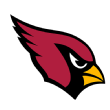
Arizona Cardinals
Kyler Murray, QB, Oklahoma (Round 1, No. 1 overall)
Simply put, this Murray pick will define the Kliff Kingsbury era in Arizona. The Cardinals made a decision to move on from a quarterback whom they selected in the top 10 just a year ago and sacrificed quite a bit to do so. But they love Murray that much. It's either going to work or it won't, but Kingsbury and that coaching staff need to maximize the way they use him in the NFL for it to all pay off.
All that said, this kid is something to watch. He makes good decisions with the football, shows poise under pressure and throws accurately from different arm angles, getting the ball out quickly with good touch. And he can definitely drive the ball vertically downfield. All of this is to say nothing of his playmaking skill, too. I haven't seen a quarterback prospect with this much athleticism and explosiveness since Michael Vick in 2001. He's fun to watch, and he's going to fit nicely with Kingsbury's scheme and David Johnson's pass-catching abilities. I also really liked that the Cards not only added some receiving help, but also three very different receiver types: Hakeem Butler is a possession guy, Andy Isabella is a vertical slot receiver and KeeSean Johnson is a big target downfield. The No. 32 scoring offense of 2018 could suddenly be something special.

Atlanta Falcons
Chris Lindstrom, G, Boston College (Round 1, No. 14 overall)
It was maybe a little bit early to take Lindstrom, sure. But he's a plug-and-play guy, and Atlanta desperately needed to find protection for Matt Ryan. He took 42 sacks last season and was constantly under pressure. Guard was really the big area of concern, too. For one, six different players started at guard for the Falcons in 2018. For two, much as is the case with Tom Brady, Ryan most needs protection on the inside. He can climb but isn't great at avoiding interior pressure and sliding when necessary. Lindstrom will help buy him time.
The Boston College product turned heads with his 4.91 40-yard dash at the combine, and once you add in his length, you can see why he excels in pushing speed rushers past the pocket. He has very good lateral mobility as well, and he is very good when blocking at the second level (Atlanta's run game was 27th in rushing yards in 2018). Combined with the team's pick of Kaleb McGary at No. 31, the Falcons did a nice job targeting a need.

Baltimore Ravens
Marquise Brown, WR, Oklahoma (Round 1, No. 25 overall)
The Ravens really needed to get some pass-catchers for Lamar Jackson, and man, did they get a good one late Thursday night. Brown has explosive burst out of his breaks, and he excels at adjusting on the run to make catches. There will be concerns about his 5-foot-9 frame and that lingering foot injury, but his ability to transition upfield and leave everyone in his dust is very intriguing in this offense.
I had him as my No. 11 prospect and the top receiver on my board, and I can't think of a single player whom I've evaluated with a better combination of speed and quickness. Brown is a big-play threat every time he gets the ball in his hands, and Jackson will be looking for him -- and third-rounder Miles Boykin -- often.
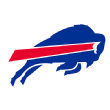
Buffalo Bills
Ed Oliver, DT, Houston (Round 1, No. 9 overall)
Sure, there was a lot of luck involved here. Oliver closed as my third-best prospect and was getting a lot of hype around the Jets and Raiders, and even Giants. And yet the talented tackle fell through the cracks to the Bills. Defensive tackle was Buffalo's No. 1 need. It lost Kyle Williams, and Harrison Phillips is more of a good rotational guy. Buffalo really needed a player like Oliver. So despite a handful of other good picks, especially Cody Ford in the second and Devin Singletary and Dawson Knox in the third, I'm rewarding the Bills for simply taking the best player on the board while also addressing a big need.
Defensive coordinator Leslie Frazier's 4-3 scheme works well with Oliver's skill set. He's a one-gap tackle who can be a disruptive pass-rusher with elite first-step quickness, high-end closing speed and a whole lot of power. The sack totals never really added up at Houston (just 13.5 over three seasons), but he did have 53.5 tackles-for-loss in his college career. He's going to be a plug-and-play difference-maker for the Bills right out of the gate.
Ed Oliver is a great interior defender with violent hands and elite first-step quickness.
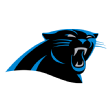
Carolina Panthers
Christian Miller, OLB, Alabama (Round 4, No. 115 overall)
Brian Burns is going to be the better player. And I did like the Panthers getting a good pass-rusher at No. 16 with Burns, as long as they use him the right way. Anthony Barr is a good model for how Burns can be most effective. However, in terms of value and where they got him, Miller is the better pick. He's a very good situational pass-rusher with pretty good speed and instincts. I really like his maturity and football character. At first look, the sack production wasn't great, but when you factor in the snap counts, he was effective in pressuring the quarterback at Alabama. He had 8.5 sacks in his senior season.
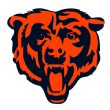
Chicago Bears
Riley Ridley, WR, Georgia (Round 4, No. 126 overall)
I was really expecting Ridley to go in Round 3 or at least early in Round 4. This is just great, great value for a talented possession receiver. He might not have breakaway speed, but he is a savvy route runner who can get separation. And while he's not going to challenge defenses vertically, he won't hesitate to go make tough catches in traffic with his strong hands and good body control. I think he's a better athlete than his combine numbers suggest, and that physicality and toughness will be appreciated in the Bears' offense. He can be a very good No. 3 receiver for them.
It's no surprise that Chicago went offense with its first two picks (David Montgomery went to the Bears in the third round). They had the league's best defense last season, and coach Matt Nagy wants some more weapons in the offense for QB Mitchell Trubisky. Remember, Chicago didn't pick in the opening two rounds because it traded for Khalil Mack and Anthony Miller. So in a sense, Mack is really the team's best draft pick. Chicago was smart in how it built this team, but I like what the Bears did in Nashville, despite not picking until late Friday night.

Cincinnati Bengals
Ryan Finley, QB, NC State (Round 4, No. 104 overall)
I think Finley can be an NFL starter. He has very fast eyes and reads the defense better than any of the other quarterbacks in the class. But even if he doesn't materialize into a franchise guy, this pick was still very good. The worst case here is the Bengals drafted a good backup QB at No. 104 overall. The best case? Finley has the talent to potentially win the starting gig as soon as 2020 for Cincinnati. Andy Dalton has two years left on his deal, but the Bengals could cut Dalton before the 2020 season with no dead money attached if Finley is ready to be the guy.
Finley is a tough kid with some mobility and poise in the pocket. You won't see him panic in the face of pressure. He senses and maneuvers all while keeping his eyes downfield. He's not a gunslinger, but he's a smart quarterback with touch and accuracy. However, the Bengals will want him to cut down on the two to three poor decisions he makes with the football per game. Outside of snagging a potential future starting quarterback, I also liked the late grabs of running backs Trayveon Williams and Rodney Anderson. There's plenty of injury history for Anderson, but the talent was worth a flier in the sixth round.

Cleveland Browns
Greedy Williams, CB, LSU (Round 2, No. 46 overall)
In a rare year in which the Browns had neither a first-round pick nor a glaring area of need, GM John Dorsey did a nice job adding talent around the AFC North division-favorite roster that he has built. Of course, Cleveland gladly hands over that missing first-rounder for Odell Beckham Jr. But the Browns still made some savvy picks, and I love what they did with their second-rounder. Cornerback was probably the position that did need some depth, and taking Williams, my 29th-best player in the class and No. 2 corner, all the way back at 46th overall is just a great get, even if some of that is luck.
I've talked plenty about Williams' tackling inconsistencies. He's what we call a buffet tackler, picking and choosing his spots. But he's also an extremely good press corner with excellent speed and closing burst. He has the smooth hips and wheels to turn and go with just about anyone. And opposing QBs ought to be careful throwing his way; he hauled in eight picks over two seasons. In joining Denzel Ward and Terrance Mitchell, this Browns cornerback crew is going to be very difficult to beat. I love that potential young tandem of Ward and Williams.
Greedy Williams has excellent top-end speed and is at his best in press-man coverage.
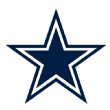
Dallas Cowboys
Tony Pollard, RB/WR, Memphis (Round 4, No. 128 overall)
Pollard is super versatile, and Dallas is going to use him all over the place. He's going to line up in the slot. He's going to contribute in the run game, taking some of the load off Ezekiel Elliott and getting reps on third down. And he's going to play a big part in the return game, which needs a lot of work. Pollard averaged 30-plus yards per kickoff return over three seasons and took seven to the house. He has limited punt return experience, but he could theoretically factor in there as well.
He has size, speed and vision. If Dallas gets him going downhill, he's going to do some damage. Pollard is typically a one-cut-and-go back, but he'll show patience in waiting for the hole and then the acceleration to pull away. And he fits nicely with the Cowboys' zone-blocking scheme. Expect him to make an impact in multiple phases of the game.
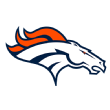
Denver Broncos
Drew Lock, QB, Missouri (Round 2, No. 42 overall)
I really like the Broncos' strategy over the first two days of the draft. First, they moved back Thursday and selected a talented tight end in Noah Fant (Iowa) while also adding two extra picks. That trade set them up to take Lock on Friday night as a serious value. He has the best arm in the class and comes with great mobility. Frankly, I'm really shocked he fell out of the first round.
His tape was up and down at Mizzou, but let's be honest, Lock didn't have much to work with there. And in the three-plus seasons that he started for the Tigers, he went through three coordinators and was frequently at a disadvantage in terms of offensive assets and opposing defensive prowess. There's no need to throw him to the fire in Denver just yet with Joe Flacco in town, so he can learn how to be an NFL quarterback before bringing his athleticism to Mile High. And because Lock was actually the team's third pick of the draft, rather than a first-rounder anointed the QB of the future, the pressure is off Flacco a bit. Denver did a nice job maneuvering this entire situation. Lock could be really special if developed properly.
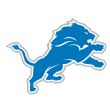
Detroit Lions
T.J. Hockenson, TE, Iowa (Round 1, No. 8 overall)
Hockenson might just be the safest, most complete prospect in the entire draft class. Lions fans might have cringed to see their team take a first-round tight end, remembering the letdowns of Eric Ebron and Brandon Pettigrew, but this kid brings a different level of potential. He has 6-foot-5 size, 4.70 speed and great strength. Detroit will be able to use him as a blocker or receiver inside, or bump him outside where his top-end route running and outstanding ball skills take over. His compete level is great, and he has a lot of toughness. Expect Matthew Stafford to use his rookie big man a ton with not a lot happening in the Lions' pass game.
Another guy I considered here: Boston College safety Will Harris. He has good instincts and flashes as a run-stopper with good closing speed. I thought he'd be a good midround sleeper, so Detroit getting him at No. 81 is solid value.
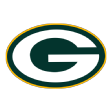
Green Bay Packers
Darnell Savage Jr., S, Maryland (Round 1, No. 21 overall)
Savage has been a big riser over the past few weeks, climbing to No. 28 on my board as the second-best safety. He's only 5-foot-11, but his 4.36 speed and ball skills make him an intriguing talent. Savage reads quarterbacks and receivers so well, jumping routes to make plays, and he is uber-aggressive in run defense. I think of him as a first responder; you'll see a lot of Savage around the ball. And he is versatile enough to contribute in the nickel role as well.
Green Bay lost only a pair of fourth-rounders to trade up to get him, and I think he's going to be a real difference-maker on that defense in the near future. And while some question the Packers' decision to focus on defense on Day 1, third-rounder Jace Sternberger offers Aaron Rodgers a good playmaker at value.

Houston Texans
Kahale Warring, TE, San Diego State (Round 3, No. 86 overall)
Everyone knows the focus of the Texans' draft was offensive line. I think I wrote the "Deshaun Watson was sacked 62 times in 2018" stat about 100 times over the past few months. And to the Texans' credit, they addressed it, taking two offensive linemen in the first 55 picks. But I was really impressed with the Warring selection. I had tight end as the team's second-biggest need, and Warring is a guy Houston can use outside or in-line as a blocker. So in addition to being another security blanket target for Watson in the passing game, he will also contribute blocking, which was obviously a concern. Jordan Akins is someone the Texans want to develop, but he's more of an F tight end; Warring will do it all.
Warring flashes as a route runner and will get separation. I like his hands and speed, as he's a threat to win 50-50 balls or beat guys vertically. Warring might need a little refining, but he's got the potential to be a good No. 1 tight end in the NFL.
San Diego State tight end Kahale Warring is a developmental tight end with average size, slightly below-average length and excellent top-end speed.
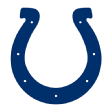
Indianapolis Colts
Ben Banogu, OLB, TCU (Round 2, No. 49 overall)
This one is more about the moves the Colts made. GM Chris Ballard knew the strength of the draft class was in Rounds 2-4. So by trading out of the first, he was able to corral a second-rounder and a 2020 second-rounder, and then later an additional fifth-rounder. And the team still landed Rock Ya-Sin, a cornerback whom the Colts would have targeted in the first round, at No. 34. It was all very smart strategy.
With the additional second-rounder that the Colts picked up, Indy took Banogu. The edge rusher -- who can play either defensive end or outside linebacker -- put up back-to-back 8.5-sack seasons at TCU, slipping blocks and closing quickly on the quarterback. He displays a good first step and quick inside moves when rushing the passer. But Indianapolis will want to see him improve his hand fighting.

Jacksonville Jaguars
Jawaan Taylor, OT, Florida (Round 2, No. 35 overall)
I wanted to say Josh Allen here because the Jags hung in there and got a top edge rusher, but Taylor's value was just too good overlook. I had him at No. 10 on my board. He obviously fell because of injury concerns, but at No. 35, it's 100 percent worth the risk. We were talking about Taylor at No. 7 for Jacksonville, and it got him a day later. The knee was part of the slide, but teams were also concerned about whether he'd keep himself in shape once he's in the NFL. That self-discipline concern scared some off. But here, well off his pre-draft ranking, I'm taking him every time -- especially to a team that needs a new right tackle.
Taylor is 6-foot-5 with long arms and plenty of quickness and athleticism. He won't falter against power rushers but can also handle speed rushers on the outside. I like the initial pop he shows at the point of contact, but he needs to take better angles in run-blocking. The Jaguars landed two top-10 talents in the first two rounds of the draft before crossing off other needs in the later rounds. Well done.
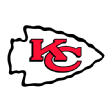
Kansas City Chiefs
Juan Thornhill, S, Virginia (Round 2, No. 63 overall)
It's no secret the Chiefs needed defensive backs. The secondary got lit up last season, as the team gave up the second-most passing yards. Outside of Tyrann Mathieu, the safety unit still needs help, and Thornhill will certainly contribute in a multitude of roles -- including as a press corner, either outside or in the slot. He closes well and has good ability in reading routes, but his tape at Virginia was a bit erratic. He's inconsistent as a tackler. But Thornhill is a real playmaker, picking off six passes in 2018, and Kansas City needs those badly.
The Chiefs had a pretty good draft overall; the Tyreek Hill uncertainty probably pushed GM Brett Veach to reach a bit for receiver Mecole Hardman, but otherwise, the team took care of some needs. And under some guidance from the Honey Badger, Thornhill has the tools to develop into a quality starter, whether it's ultimately at safety or corner.
Juan Thornhill is a versatile defensive back out of Virginia who has experience at both corner and safety and is a willing run defender.
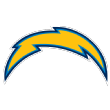
Los Angeles Chargers
Nasir Adderley, S, Delaware (Round 2, No. 60 overall)
The Chargers needed a free safety and they got a good one here. Adderley plays with balance and closing burst, and shows the ability to make tackles in the open field. But what stands out is his ball skills. He's a true ball hawk, pulling in nine interceptions over the past two seasons. I think he can certainly play the deep third in the Bolts' system next to Derwin James in the spot vacated by cap casualty Jahleel Addae. But he could also contribute in the nickel role and on special teams early in his pro career. He was my 37th-best prospect, so nabbing him late in the second is a good get for Los Angeles.

Los Angeles Rams
David Long, CB, Michigan (Round 3, No. 79 overall)
The Rams have two starting corners headed into the final years of their contracts, and they could stand to tighten up the pass defense. Long brings great instincts as a man-to-man cover corner. His speed is OK, as are his ball skills. But those instincts, along with an ability to reroute receivers, will make him effective in the NFL. His production numbers won't stand out, but his coverage efficiency was impressive. In getting Long and safety Taylor Rapp, the Rams restocked a secondary that lost Lamarcus Joyner and could lose at least one other starter next season.
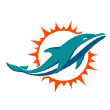
Miami Dolphins
Michael Deiter, G, Wisconsin (Round 3, No. 78 overall)
The Dolphins made the move for Josh Rosen. Now they have to keep him upright. Part of the reason Rosen struggled in Arizona was the constant pressure and lack of protection, so the first step to setting up a turnaround for their new franchise QB is getting some help up front. That's the only way the Rosen experiment works. The sixth-round grab of Isaiah Prince isn't going to make waves, but it shows the Dolphins are trying to improve that unit and bringing in options at the very least. But Deiter could be the answer at guard or center, both of which are big needs.
The big Wisconsin product has good first-step quickness and shock in his hands. He gets a good push in run-blocking and can anchor well in pass protection. His versatility will be welcomed on a line under major renovations, and he has the intangibles to become a good starting NFL guard or center. And for what it's worth, I also thought Miami did well in landing Christian Wilkins at No. 13. He was my seventh-best prospect, and getting him there, along with trading for Rosen, jumpstarts the rebuild in South Florida.

Minnesota Vikings
Irv Smith Jr., TE, Alabama (Round 2, No. 50 overall)
I really love that Minnesota identified offensive line as a huge problem and attacked it with three picks for the unit in the first six rounds. It was a priority. But that didn't stop the Vikings from getting a real matchup nightmare in the second round. Kirk Cousins likes to throw underneath and check down, so expect Smith to get plenty of work as a rookie. The run-heavy offense will set up the play-action, and Smith will be there waiting to rip off big plays. It should be noted that Kyle Rudolph is in a contract year, so Smith getting a year to develop and learn from him before potentially becoming the go-to guy at the position will be beneficial.
Smith can separate vertically or pick up chunks after the catch with his speed and athleticism. His ball skills are above average, and he accelerates out of the catch very well. His blocking is improving, but Smith's value comes in his ability to create mismatches and take advantage.
Irv Smith Jr. is a tight end out of Alabama who caught seven touchdowns for the Crimson Tide during his final season.
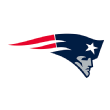
New England Patriots
Chase Winovich, DE, Michigan (Round 3, No. 77 overall)
Sure, Jarrett Stidham is an obvious name here. If he's the answer as the heir to Brady's throne, it sets the Patriots up for years. But there's no certainty there, and edge rushing was a huge area of need for the them as they reshuffle their front seven. Winovich produces. He's a technician with great hands and good speed, and he's going to give you plenty of effort. I like his array of pass-rush moves and his instincts. Stop me if you've heard this before, but New England got an underrated prospect who could end up being an effective contributor. Defensive end is relatively thin, so expect him to see plenty of snaps as Bill Belichick evaluates what he has. As my No. 44 prospect, Winovich recorded 35 tackles-for-loss over the past two seasons.
In general, I loved New England's draft. Joejuan Williams fits well. N'Keal Harry is a big weapon in the receiving game. Stidham has a high ceiling. And Damien Harris jibes with what the Patriots do with their running backs. Another impressive haul for the defending champions.
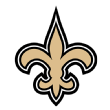
New Orleans Saints
Erik McCoy, C, Texas A&M (Round 2, No. 48 overall)
Pro Bowler Max Unger retired, opening up the center position on the Saints. New Orleans added Nick Easton in free agency, but McCoy is a smart, athletic talent who could push to start. The Saints need to protect 40-year-old Drew Brees inside, and McCoy is a plug-and-play option as my No. 35 prospect in the class. He plays with a lot of balance and awareness, but it's his athleticism that really pops on tape. He ran a 4.89 40-yard dash at 303 pounds, which was the fastest time at the combine for all offensive linemen.
I have some concerns about his shotgun snapping consistency, but he should develop there over time. And if he doesn't, McCoy has enough athletic ability, football intelligence and bulk to move to guard. He has some experience there. I also liked the fourth-round grab of Chauncey Gardner-Johnson. The Florida defensive back is a smooth mover who can play safety or the nickel role, two spots that could use some depth.

New York Giants
Julian Love, CB, Notre Dame (Round 4, No. 108 overall)
Outside of quarterback -- which the Giants did address, even if it was in a questionable way with Daniel Jones -- cornerback was the team's biggest problem. There was no one there outside of Janoris Jenkins. But Big Blue adds Love, first-rounder Deandre Baker and Corey Ballentine to clean the position up a bit. Love is one of the more instinctive cornerbacks in the class, and while he is definitely at his best in off-man coverage, he can also play press. Love has fast eyes and pretty good ball skills, and he is an above-average tackler who won't shy away from contact.
By getting him in the fourth round, the Giants got a very good player at a premium. I would have thought he'd be off the board by the closing bell on Day 2. He's ready to play immediately, which is a good thing because New York needs a lot of help at the position.
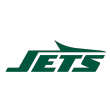
New York Jets
Quinnen Williams, DT, Alabama (Round 1, No. 3 overall)
Let's keep this simple: The Jets took the best player on the board, and you can't go wrong with that strategy, especially when that player is a beast like Williams. Edge was the bigger need, and there's still a chance that third-rounder Jachai Polite works out there, but New York didn't chase a player or need at No. 3 overall. Some thought Williams had the upside of the best player in the class, and while I still lean Bosa in that regard, it's not a crazy thought. I mean, the guy had 18.5 tackles-for-loss last season and seven sacks from inside. He has a terrific first step and doesn't lose one-on-one. In between Henry Anderson and Leonard Williams, he is going to be extremely disruptive in the NFL.
Additionally, the fourth-round selection of Trevon Wesco will go under the radar. He is one of the better blocking tight ends in the class and satisfies a team need.
Quinnen Williams is a well-built defensive tackle out of Alabama who rarely loses one-on-ones.
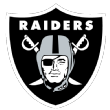
Oakland Raiders
Johnathan Abram, S, Mississippi State (Round 1, No. 27 overall)
Take away where the Raiders took Clelin Ferrell -- I think he's a good player, but he was just taken a little too early at No. 4 -- and you have a pretty good draft class. Josh Jacobs makes a lot of sense and Trayvon Mullen is a physical corner. In fact, Oakland targeted lots of tough, physical players who can be difference-makers on the defensive side of the ball. At the top of the list is Abram, a human torpedo.
The hard-hitting safety brings a lot of energy to the secondary and can be a defensive leader for this rebuilding defense. Abram has a ton of power and good closing burst. He has the size to matchup with tight ends and bigger receivers, but will also be aggressive in run support. He's a competitor and fits what Jon Gruden is looking for in defensive assets. My top safety is going to be a very good NFL player.

Philadelphia Eagles
JJ Arcega-Whiteside, WR, Stanford (Round 2, No. 57 overall)
Arcega-Whiteside comes from a basketball family, which is fitting because I think of him as a power forward. You won't see much better in terms of boxing out defensive backs, especially in the red zone. He's a scoring machine, finding the end zone 14 times last season. The Stanford product has very good speed and will come down with 50-50 balls. Look for him to use savvy route running and physicality to find separation. Between Arcega-Whiteside, newly signed DeSean Jackson and Alshon Jeffery, Carson Wentz is going to have a lot of mouths to feed this season.
I also like Andre Dillard, although he needs some development. Miles Sanders can be an eventual starter, but for now fits in nicely with the running-back committee.

Pittsburgh Steelers
Justin Layne, CB, Michigan State (Round 3, No. 83 overall)
Joe Haden is in a contract year, and Artie Burns just hasn't done a whole lot despite being a high pick in 2016. So corner is a sneaky need for the Steelers. And they got Layne 30 spots past where I ranked him. Even with Steven Nelson in black and yellow, Layne should push for a top-three job right out of the gate. He is a press corner who can read receivers and then turn and run with them very well.
The Devin Bush pick received serious consideration here, as he will be the face of the defense without Ryan Shazier. But the value on Layne was just too good. The Michigan State corner needs to get stronger still, but he has a high ceiling.
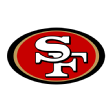
San Francisco 49ers
Deebo Samuel, WR, South Carolina (Round 2, No. 36 overall)
It would have been easy to say Nick Bosa here. He's the top player in the class and the fit is perfect. But I love Samuel, and this was a good spot to get him. He will be a playmaker for Jimmy Garoppolo, competing for balls in traffic and picking up yardage after the catch. He's just really fun to watch when he has the ball in his hands and is a physical receiver who is built like a running back. Every time he touches the ball, there's big-play potential. He's a dangerous threat out of the slot, but he can also make a dent in the return game.
Deebo Samuel is a receiver out of South Carolina who was the Gamecocks' leading pass-catcher during his final season.

Seattle Seahawks
DK Metcalf, WR, Ole Miss (Round 2, No. 64 overall)
By now you know all about the combine legend of DK. He's a physical freak with terrific strength and elite straight-line speed. He gets downfield in a hurry and can redirect on press coverage. And for a team with a quarterback like Russell Wilson -- someone who extends plays -- this makes a lot of sense. Metcalf's ability to get vertical will lead to plenty of big plays.
And while there are some red flags, including drops, not winning on 50-50 balls and struggles on non-vertical routes, one or two big plays per game make this absolutely worth it, especially when you factor in where the Seahawks got him. It's low risk. With Doug Baldwin potentially done with football, Seattle needs weapons in the receiving game. Metcalf could be one. He's a hungry receiver who will be a real matchup problem for corners.

Tampa Bay Buccaneers
Devin White, ILB, LSU (Round 1, No. 5 overall)
This is just too obvious. White is a super-rangy linebacker who could step in and be the leader of the defense. Without Kwon Alexander, they need 'backers, and they got a good one with their top-five pick. White plays with great instincts and just always seems to be around the ball. He closes extremely fast and has above-average change-of-direction skills. It's no wonder that he piled on 256 tackles over the past two seasons. He was my No. 4 prospect and has all the makings of a star in the NFL.
In the team's first three picks, it got an elite linebacker and two cornerbacks, alleviating two big concerns on defense.
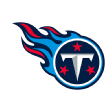
Tennessee Titans
Jeffery Simmons, DT, Mississippi State (Round 1, No. 19 overall)
Even if he doesn't suit up at all in Year 1, this was a very good pick. When healthy, he's one of the five best players in this draft class. He plays with leverage and shows excellent upper-body pop. Simmons is an immediate starter once he recovers from his torn ACL, probably slotting in right next to Jurrell Casey.
The Titans also did a nice job getting A.J. Brown, although either him or Adam Humphries will have to move outside. Marcus Mariota needed another weapon, and Brown's ability to make tough catches qualifies as such.

Washington Redskins
Dwayne Haskins, QB, Ohio State (Round 1, No. 15 overall)
Man, did this ever work out well for Washington. The Redskins loved Haskins pre-draft and opted not to trade up from the 15th pick to ensure they landed him. No matter. Haskins fell, as the Giants went with another quarterback, and the Broncos, Bengals and Dolphins all tended to other needs. In Haskins, Washington gets the best pocket passer in the class, hitting 70 percent of his passes at Ohio State. He's not the most mobile QB, but he can sense pressure and climb the pocket. I love his touch and anticipation, and his arm strength is pretty solid, as he displays good trajectory on rail shots. Haskins just has a smooth stroke with zip and high-end accuracy, and it's going to translate to success in the NFL.
He probably won't be asked to be the guy in Week 1, and that's a good thing. Learning behind seasoned veterans Case Keenum and Colt McCoy (along with guidance from Alex Smith) will do him wonders as he develops. After all, he does have only one season of starting experience, even if that season did include 50 passing touchdowns. And around him, Washington fixed him up with some new toys: burner Terry McLaurin, the shifty Bryce Love and late-round steal Kelvin Harmon.
